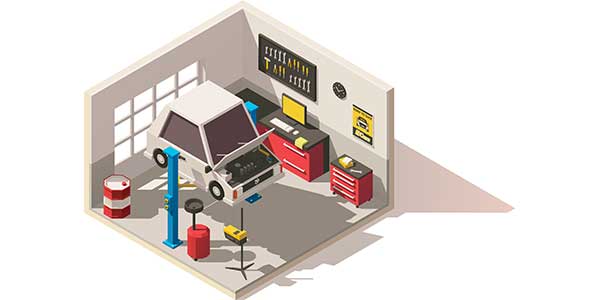
Basic maintenance is the key to keeping a car running at its best. When motorists keep up with fluid changes, tire checks, filter changes and other services, it helps avoid bigger and more expensive repairs down the road. However, over time, some vehicle parts and components wear out or become damaged. When motorists are educated about their vehicles’ maintenance needs, it allows them to address any issues before they become even bigger problems.
Changing the oil and oil filter, replacing wiper blades and air filters, and scheduled maintenance top the list of the 10 most common vehicle repairs of 2017, according to research conducted by IMR Inc. (automotiveresearch.com).
Here is the complete list of the most common repairs performed by vehicle owners and their trusted repair shops, as well as maintenance recommendations from the Car Care Council, to keep vehicles operating safely and reliably while maintaining their long-term value.
1. Oil/oil filter. Change the vehicle’s engine oil every 3,000 to 5,000 miles depending on the vehicle’s make and model, how the vehicle owner drives and the condition under which they drive. Filters are normal wear items that require checks and replacement.
2. Wiper blades. Replace every six months or when cracked, cut, torn, streaking or chattering.
3. Air filter. Replace annually, or more often in areas with heavy airborne contaminants or whenever heating or cooling efficiency is reduced.
4. Scheduled maintenance. Typical maintenance includes engine performance; oil, filters and fluids; wheels and tires; check engine light; belts and hoses; air conditioning; brake service and appearance.
5. Tires. Rotate tires every 6,000 miles. Tire replacement is necessary if the tread depth is below the minimum legal requirement or the sidewalls are severely cracked or punctured.
6. Battery. Connections should be clean, tight and corrosion free. If the battery is three or more years old, it should be tested and replaced, if necessary.
7. Brakes. Check the entire brake system every year, including brake pads, shoes, rotors, drums, calipers and brake fluid. Brake fluid should be changed every two to three years or 24,000 to 36,000 miles, or as directed in the owner’s manual.
8. Antifreeze. Change the coolant at the specified interval and with the correct fluid, as indicated in the owner’s manual.
9. Engine tune-up. Based on spark plug type, the replacement interval can range from 30,000 to 100,000 miles. Replace any other ignition system and/or emissions system parts that may be needed or recommended. Also, replace the fuel and air filters.
10. Wheels aligned/balanced. Check the car’s alignment at least annually and also at the first sign of improper handling or uneven wear. Do a wheel alignment with the purchase of a set of new tires.
“With scheduled maintenance toward the top of the list, these findings are a sign that more motorists are hearing the messaging and understanding the importance of routine vehicle maintenance, and are taking the necessary steps to ensure the safety and dependability of their vehicles,” said White. “By following a proactive auto care plan, the typical car should deliver at least 200,000 miles of reliable, efficient and enjoyable performance.”
The council’s popular Car Care Guide for motorists and is available at no charge, electronically or by printed copy, in English and Spanish. The guide covers major services, component groups within the vehicle, service interval recommendations and much more. To order a free copy, visit the council’s consumer education website at carcare.org.
The Car Care Council is the source of information for the “Be Car Care Aware” consumer education campaign promoting the benefits of regular vehicle care, maintenance and repair to consumers. For more information, visit carcare.org.













